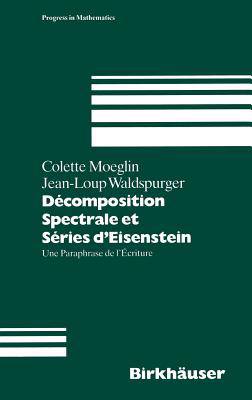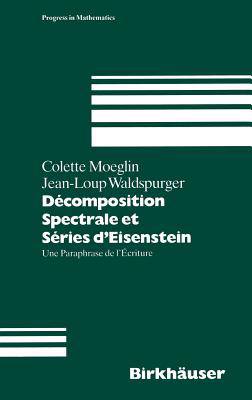
- Afhalen na 1 uur in een winkel met voorraad
- Gratis thuislevering in België vanaf € 30
- Ruim aanbod met 7 miljoen producten
- Afhalen na 1 uur in een winkel met voorraad
- Gratis thuislevering in België vanaf € 30
- Ruim aanbod met 7 miljoen producten
Zoeken
Decomposition Spectrale Et Series d'Eisenstein
Une Paraphrase De l'Ecriture
C Moeglin, J L Waldspurger
€ 105,45
+ 210 punten
Omschrijving
The decomposition of the space L2 (G(Q)\G(/A)), where G is a reductive group defined over (Q and /A is the ring of adeles of (Q, is a deep problem at the intersection of number and group theory. Langlands reduced this decomposition to that of the (smaller) spaces of cuspidal automorphic forms for certain subgroups of G. The present book describes this proof in detail. The starting point is the theory of automorphic forms, which can also serve as a first step towards understanding the Arthur-Selberg trace formula. To make the book reasonably self-contained, the authors have also provided essential background to subjects such as automorphic forms, Eisenstein series, Eisenstein pseudo-series (or wave-packets) and their properties. It is thus also an introduction, suitable for graduate students, to the theory of automorphic forms, written using contemporary terminology. It will be welcomed by number theorists, representation theorists, and all whose work involves the Langlands program.
Specificaties
Betrokkenen
- Auteur(s):
- Uitgeverij:
Inhoud
- Aantal bladzijden:
- 344
- Taal:
- Frans
- Reeks:
- Reeksnummer:
- nr. 113
Eigenschappen
- Productcode (EAN):
- 9783764329389
- Verschijningsdatum:
- 1/01/1993
- Uitvoering:
- Hardcover
- Formaat:
- Genaaid
- Afmetingen:
- 156 mm x 234 mm
- Gewicht:
- 703 g

Alleen bij Standaard Boekhandel
+ 210 punten op je klantenkaart van Standaard Boekhandel
Beoordelingen
We publiceren alleen reviews die voldoen aan de voorwaarden voor reviews. Bekijk onze voorwaarden voor reviews.











